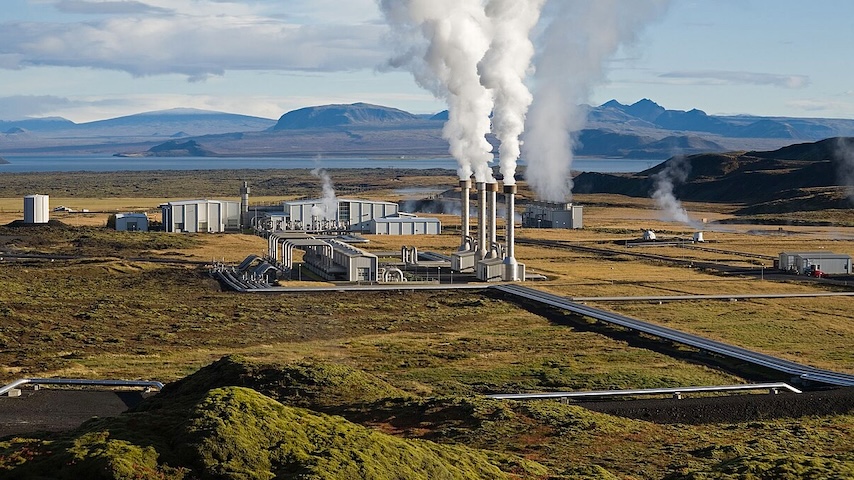Bring on the Geothermal Power Era
Photo by Gretar Ívarsson/Wikimedia Commons
It may be hard to see amongst the gloom, but solar power and battery storage have been on an absolute tear. The vast bulk of new power additions to the US grid this year have come from those sources, and the total installed will dwarf previous records. This is undoubtedly thanks in part to recent policy maneuvers like the Bipartisan Infrastructure Bill and the Inflation Reduction Act, but on a longer time scale it is due to the incredible drop in what it costs to make those things, especially solar panels.
The Department of Energy’s SunShot initiative, launched in 2011, helped bring the utility-scale solar cost down from $0.28 per kilowatt-hour to $0.06 — three years ahead of the 2020 target. For residential solar, the cost fell from $0.52 to $0.16 per kilowatt-hour; these numbers make solar power among the cheapest forms of electricity available.
But this isn’t about solar power. This is about the chance — a tantalizing, potentially game-changing chance — that the geothermal power industry currently finds itself in the early part of solar’s stunning price curve, with huge drops in its near future that could make the heat beneath our feet a hugely important part of the future clean energy mix.
“New technologies are opening new horizons for geothermal energy across the globe, offering the possibility of meeting a significant portion of the world’s rapidly growing demand for electricity securely and cleanly,” said Fatih Birol, the executive director of the International Energy Agency, in a press release on Friday. The IEA released a new report on The Future of Geothermal Energy, with some extremely rosy projections: emissions-free geothermal power could meet as much as 15 percent of the global demand growth in electricity between now and 2050.
That would mean a massive 800 gigawatts or so of installed capacity — up from something like 15 gigawatts today. Those geothermal plants would generate about the same amount of electricity as the demand from the US and India combined.
Just like with solar power, the way this happens is by cutting the costs of building this stuff. Geothermal energy has been around for more than a century, but the transfer of newer tech from the shale gas drilling boom is helping create a new “enhanced” geothermal industry that is just getting off the ground now. In October, a huge project to be built in Utah got its Bureau of Land Management approval; others will follow soon.
The projections of price drops are just as remarkable as the capacity projections: the IEA says the cost could fall by 80 percent, to $50 per megawatt-hour, by 2035; the DOE’s enhanced geothermal EarthShot wants that down to $45. That sort of trajectory would lure in massive investment, to the tune of as much as $1 trillion a decade from now and $2.5 trillion by mid-century, the IEA says.
This is all a very, very big deal. Geothermal power is baseload power, meaning it is dispatchable and unconcerned with the vagaries of weather or daylight. If it does reach that $50 per megawatt-hour level, that would put it on par with existing hydropower and nuclear power plants. As with any energy source there are still concerns about proper siting, and the involvement of the oil and gas industry in this new boom is at least a little bit icky — two bills supposedly streamlining geothermal permitting passed the House recently, with a mild degree of Democratic support along with all Republicans.
There is also some huge potential for the power source to transform some of the poorer parts of the world. The biggest potential resource for enhanced geothermal is in Africa; tapping even one percent of that potential could meet the entirety of the content’s electricity needs in 2050 in all of the IEA’s projection scenarios. And all this doesn’t even get in to how geothermal can also provide heat along with electricity.
“Geothermal energy is one of our greatest untapped clean energy resources,” one US government official in October, when the new Utah plant was approved. Time to start tapping.